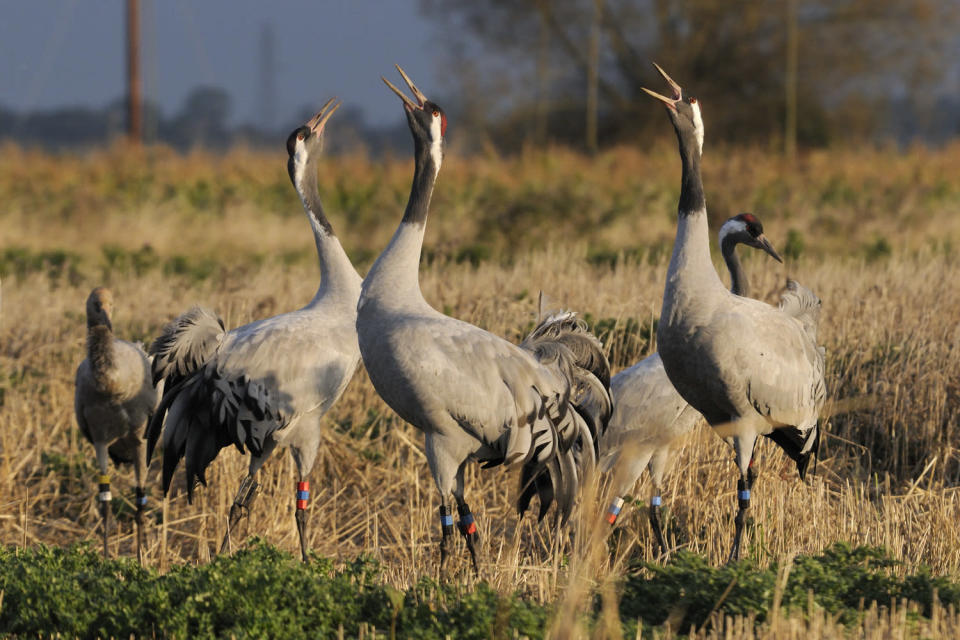[ad_1]
Up to 99,000 hectares of land in England, from metropolis fringes to wetlands, will be concentrated on supporting wildlife in five important “nature recovery” tasks, the Government reported.
The five landscape-scale jobs in the West Midlands, Cambridgeshire, the Peak District, Norfolk and Somerset purpose to enable tackle wildlife loss and local climate change and enhance public access to nature.
They will share an first £2.4 million pot from the Setting Division (Defra) and Pure England, for operate to build new habitats, control land for character and carbon storage and raise footpaths and hook up with communities, with even more funding expected from other sources and partners.
It is hoped the mother nature recovery strategies, which contain existing mother nature reserves and the broader landscape, will prolong throughout 99,200 hectares of land (245,000 acres) in full in excess of time – equal in dimension to all 219 present national mother nature reserves.
Do the job in the assignments will array from converting farmland into chalk grassland to restoring “dewponds” and running wetlands and other land sustainably.
Jobs will also produce strategies to function with communities in metropolitan areas and deprived parts to make improvements to their entry to mother nature, which includes making new environmentally friendly places and improved footpaths and bridleways.
Setting Minister Rebecca Pow mentioned: “These five projects throughout England are exceptional illustrations of enjoyable, significant-scale restoration that is critically essential to carry about a phase-transform in the recovery of character in this state.
“They will noticeably contribute to attaining our target to halt the decline in species abundance by 2030 and our commitment to guard 30% of our land by 2030, enabling us to leave the surroundings in a far better condition than we uncovered it.”
Normal England chairman Tony Juniper included: “Nature recovery can only manifest if we consider action at scale, and that can only perform via partnerships.
“These five landmark jobs will search for to get better species and habitats by means of collaboration amongst a large selection of landowners and organisations, delivering added benefits for wildlife, local economies, adaptation to local weather adjust and for general public wellbeing.”
Joan Edwards, director of policy at The Wildlife Trusts, stated it was “good to see good ambition” from the Federal government to assist individuals accessibility nature near exactly where they lived and link current wildlife web pages.
“Species desperately require inexperienced corridors to bridge jointly fragmented habitats in addition to big, bold jobs that permit landscapes to get better at scale.
“Wildlife has endured catastrophic declines in new a long time and 15% of species in the British isles are at risk of extinction.
“Government can enable change that all over by accelerating the creation of a nature recovery network, dedicating far more land for character, and implementing more robust protections for our most important sites,” she urged.
The five tasks are:
– Purple Horizons – a plan extending throughout up to 10,000 hectares on the fringes of the West Midlands conurbation and focusing on restoring and connecting fragmented heathlands to make a mosaic of heathlands, wetlands, woodlands and grasslands.
It will backlink up current secured locations, function with regional landowners to provide habitat generation and carbon storage, and is developing a strategy for connecting with communities in the deprived parts of Walsall to deliver inexperienced places where by they will have the greatest wellbeing added benefits.
– Somerset Wetlands – A challenge extending throughout as significantly as 60,000 hectares of the Somerset Ranges and Moors with a extended-time period purpose to restore ecological procedures across moors, wetlands and coast.
Controlling the wetlands sustainably will keep carbon-storing peatland, boost inexperienced tourism, lessen pollution and increase resilience to floods and drought. In the initially 12 months, associates will produce 11 projects operating with landowners, restoring habitats and storing carbon.

– Cambridge Character Network – This plan aims to build wildlife-abundant and accessible habitats in and about the metropolis of Cambridge covering 9,200 hectares, creating present character websites bigger, much better and additional related.
It will incorporate changing farmland into new chalk grassland, creating a new meadow, and creating new woodlands, as effectively as tree planting and meadow restoration in the town itself.
– Wye Valley, Peak District – The job handles 10,000 hectares, including nearly 1,400 hectares of current safeguarded spots and precedence habitat.
In its 1st yr, project companions the National Belief, Derbyshire Wildlife Have faith in, Peak District Nationwide Park Authority and Normal England will concentration on restoring dewponds to assist amphibians and bugs.
Baseline surveys will assess habitats and options for personal financial investment in boosting mother nature beneath policies which involve builders to supply “net gains” for biodiversity as part of their techniques, when nature recovery packs for 500 citizens will aid them join with character.
– Wendling Beck, Norfolk – This venture in the vicinity of Dereham aims to renovate farmland and its river valley throughout 10,000 hectares by way of restoring and making habitat and adopting extra sustainable farming techniques.
A undertaking partnership of nearby farmers, Norfolk Wildlife Have faith in and Norfolk County Council, supported by other people, is generating and maximizing grassland, heathland, woodland and wetland to enhance wildlife from turtle doves to environmentally friendly winged orchids.
It is piloting a plan for biodiversity internet achieve credits and also ideas to supply permissive obtain and hyperlinks to the Norfolk Trails Community.
[ad_2]
Source backlink





More Stories
Advantages And Disadvantages Of A Handyman Franchise
How to Evaluate a Franchise – 4 Key Points to Consider!
21 Secrets to Franchise Business Success